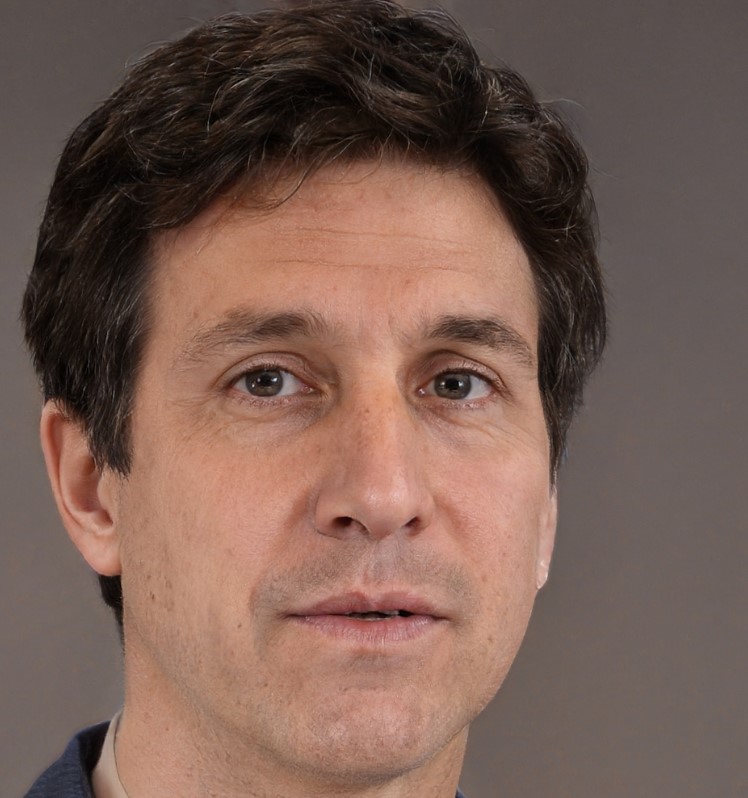At the federal level, everything about CBD comes down to one simple detail: the amount of THC inside it.
When Congress passed the Farm Bill in 2018, it set a clear dividing line. Hemp with 0.3 percent THC or less became legal across the country. Anything stronger was placed in the marijuana category, still treated as a Schedule I drug.
Since that law took effect, every state has taken its own path. In some, CBD is treated like any other crop or supplement.
You can walk into a gas station or pharmacy and see it on the shelves without much regulation.
Others have built tight systems around it, requiring lab testing, labels, and licenses, almost as if it were a prescription product.
Some states take no chances at all, demanding that every trace of THC be removed before a single bottle or gummy is sold.
As you can see, the picture is mixed. Some states welcome CBD freely, others keep a firm grip on it, and a few make it nearly impossible to buy or sell.
That is why understanding exactly where CBD is legal, regulated, or restricted in 2025 is essential before anyone decides to grow, sell, or use it.
US States Where CBD Is Legal
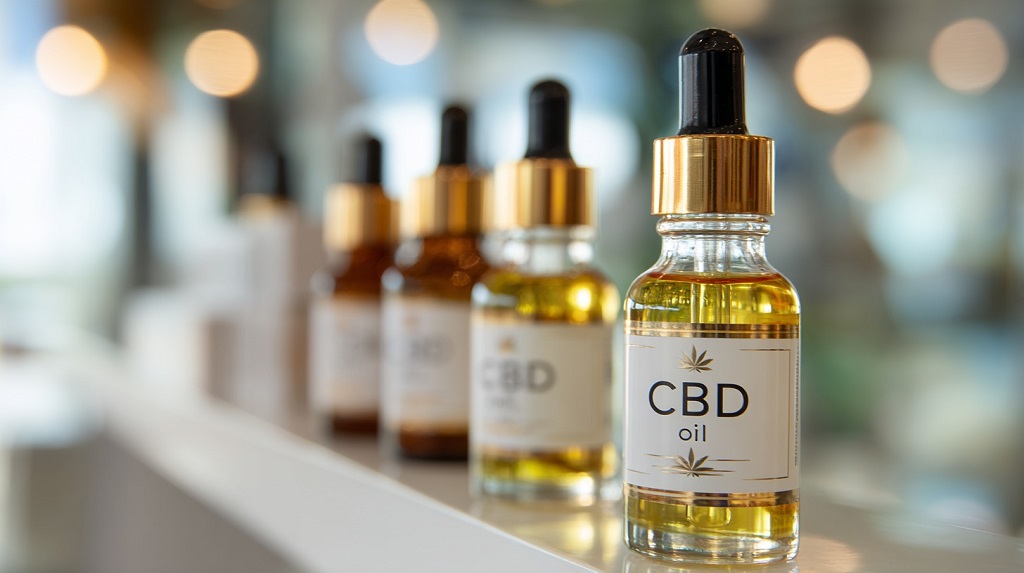
CBD became legal at the federal level when hemp with less than 0.3% THC was removed from the Controlled Substances Act.
That change opened the industry to farmers, researchers, and businesses.
Some states, like Colorado and Oregon, allowed broad access and treated CBD as a consumer product.
Others, including Texas and Florida, introduced stricter oversight, often tying it to medical cannabis programs.
In several states, the legal definition of hemp was tightened further, with clear rules on THC content and product standards.
So while federal law allowed CBD to enter the mainstream, how it’s handled still depends heavily on where you are.
The list below covers where CBD is fully legal in the United States.
| State | Status | Notes |
| Alaska | Fully legal | CBD products are sold widely via retail and dispensaries. |
| Arizona | Fully legal | Retail CBD is widely available under an adult-use regime. |
| California | Fully legal | CBD is allowed in food, beverages, and cosmetics under broad regulation. |
| Colorado | Fully legal | Sale of hemp- and marijuana-derived CBD both permitted. |
| Connecticut | Fully legal | Licensed retail outlets carry CBD broadly. |
| Delaware | Fully legal | Broad CBD access under adult-use and hemp programs. |
| Illinois | Fully legal | No restriction on source; hemp- and cannabis-derived CBD permitted. |
| Maine | Fully legal | Permits CBD in all retail forms, including wellness goods. |
| Massachusetts | Fully legal | CBD is treated like a cannabis product, but there are strict testing/labeling rules. |
| Michigan | Fully legal | Both hemp and cannabis-derived CBD are available through markets. |
| Montana | Fully legal | Broad retail and dispensary access. |
| Nevada | Fully legal | Wellness- and adult-use markets include CBD. |
| New Jersey | Fully legal | Hemp and cannabis-derived CBD are both allowed without broad limits. |
| New Mexico | Fully legal | Hemp-derived CBD production is regulated, but full consumer access is allowed. |
| New York | Fully legal | Testing and labeling are strictly enforced. The market is broadly open. |
| Ohio | Fully legal | Regulated by the Agriculture dept. CBD in grocery/pharmacy retail. |
| Oregon | Fully legal | Early adopter; all formats permitted with testing standards. |
| Pennsylvania | Fully legal | CBD is legal for medicinal and recreational purposes. |
| Vermont | Fully legal | Hemp and marijuana-derived CBD are accessible to adults. |
| Washington | Fully legal | CBD is present across major retail categories under the cannabis board. |
| West Virginia | Fully legal | CBD production linked to state hemp program; retail sales unrestricted. |
Why So Many States Decided to Legalize CBD?
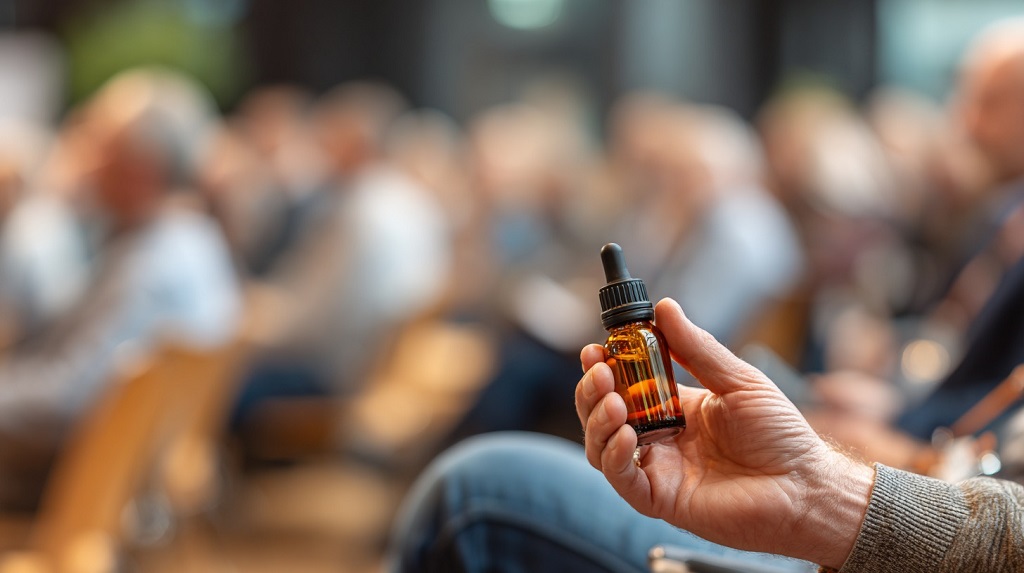
The movement to legalize CBD did not begin in corporate boardrooms or political strategy meetings. It started with families, especially parents, searching for real solutions when conventional medicine had failed.
At public hearings, they shared personal stories and held up small bottles of CBD oil that had stopped their children’s seizures when nothing else could. Their experiences reached lawmakers who, until then, had viewed cannabis as a closed subject.
Physicians began to speak out, too. Some had seen CBD ease nerve pain, lower inflammation, or help patients struggling with anxiety and sleep disorders.
As early research backed those results, it became harder to dismiss CBD as another cannabis product. Many in the medical field came to see it as a treatment option with therapeutic value and no intoxicating effects.
Economics played a role as well. In rural communities hit hard by falling tobacco and grain prices, hemp looked like a lifeline. Lawmakers saw the potential: new jobs, local investment, tax revenue, and an agricultural product with a relatively low environmental footprint. In areas that had been losing industry for decades, hemp processing facilities brought activity back to empty mills and abandoned warehouses.
Even pet owners added to the momentum. Some veterinarians began recommending CBD for dog arthritis, and the results were hard to ignore. Dogs that once struggled to stand were walking comfortably again. As videos and personal accounts spread online, many people saw the benefits for themselves, clear and visible changes that made the issue feel less abstract and far more personal.
US States Where CBD Is Regulated
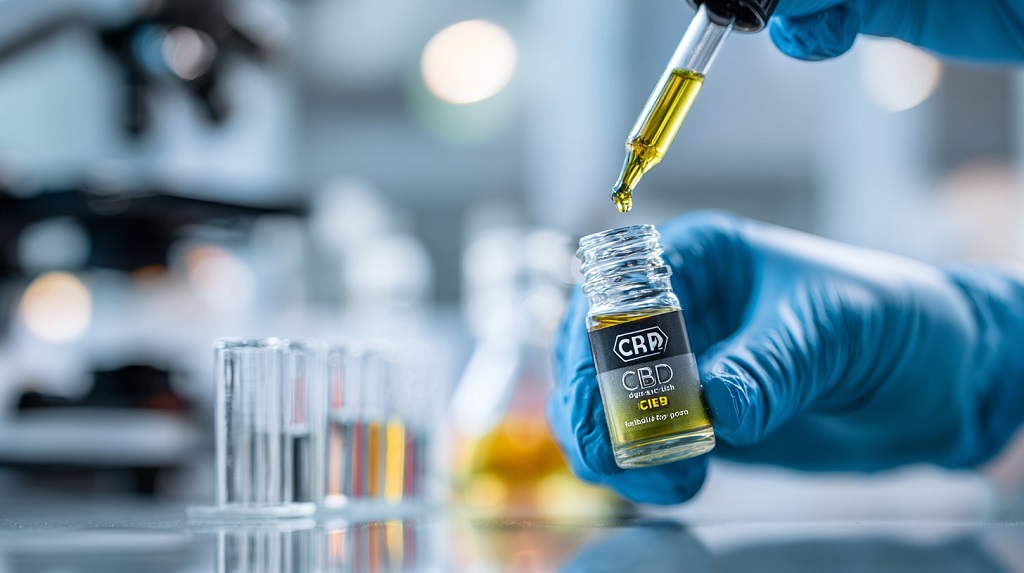
Some states chose not to open the door entirely. They recognized the economic and medical potential of CBD but wanted tighter control over how it was made available to the public.
Officials in those states argued that CBD, although non-intoxicating, still required guardrails, such as accurate labeling, verified lab results, and clear rules on who could sell it.
Regulated states tend to require manufacturers to prove purity and potency through licensed testing labs.
Labels must list every ingredient, batch number, and THC content.
| State | Status | Notes |
| Idaho | Conditionally legal | Requires 0 % THC. Any detectable THC renders the product illegal. |
| Kansas | Conditionally legal | Only THC-free CBD permitted. No trace of THC is allowed. |
| Iowa | Medically regulated | Caps on THC content, smokable hemp banned. Registration is required. |
| Georgia | Conditionally legal | CBD is allowed for certain medical conditions with up to 5 % THC. |
| Kentucky | Conditionally legal | Permits only hemp-derived CBD with ≤0.3 % THC under the program. |
| Louisiana | Regulated | Hemp-derived CBD allowed under 0.3 % THC. There are strict packaging/edible rules. |
| Mississippi | Conditionally legal | CBD with up to 0.5 % THC is allowed under limited medical conditions. |
| Nebraska | Restricted | Hemp cultivation is allowed. Retail CBD sales face heavy limits or bans. |
| Oklahoma | Conditionally legal | Retail limited to tested hemp products. Stricter controls than fully open states. |
| South Carolina | Conditionally legal | CBD up to 0.9 % THC permitted only for approved medical uses. |
| South Dakota | Conditionally legal | Only hemp-derived CBD under 0.3 % THC is permitted in most cases. |
| Tennessee | Conditionally legal | CBD with up to 0.9 % THC for certain medical cases. The retail is limited. |
| Texas | Regulated | CBD under ≤0.3 % THC is legal. Full market and THC-rich products remain restricted. |
| Utah | Medically regulated | Products above 0.3 % THC require a medical cannabis card. Other formats are regulated. |
US States Where CBD Is Still Restricted or Practically Illegal

| State | Legal Status | Notes |
| Alabama | Medical use allowed | CBD is permitted for specific health conditions with a medical cannabis license. |
| Arkansas | Medical framework active | CBD is available through the state’s medical cannabis program. Sales are regulated. |
| Florida | Medical use only | CBD is linked to medical cannabis prescriptions. Retail outside program restricted. |
| Hawaii | Medical access | Cannabis-derived CBD is sold in licensed dispensaries for patients. |
| Indiana | Limited legality | Hemp CBD is legal under 0.3% THC. Marijuana-derived CBD is available by prescription. |
| Maryland | Medical access | CBD is allowed through licensed medical cannabis retailers. |
| Minnesota | Medical and transition to adult-use | CBD is allowed under the medical framework. Adult-use rollout underway. |
| Missouri | Medical program | CBD is accessible for patients with medical authorization. General retail is allowed for hemp. |
| New Hampshire | Medical access | High-THC CBD products permitted for qualifying patients only. |
| North Dakota | Medical program | CBD is available through dispensaries for patients with medical certification. |
| Rhode Island | Medical access | CBD is covered under both medical and new adult-use systems with strict labeling. |
| Virginia | Medical and transitional | CBD is legal for medical patients. Adult-use sales pending final regulations. |
| North Carolina | Effectively illegal | Only medical-grade CBD for severe epilepsy. Retail sales remain risky. |
| Nebraska | Practically illegal | Hemp cultivation is allowed, but CBD retail is banned. The penalties for possession are possible. |
| Idaho | Zero-tolerance restriction | Only 0% THC CBD is legal. Any trace amount makes it illegal to possess or sell. |
As of 2025, most states have found a way to accept CBD. But a few still haven’t budged. It’s not because people are against it or because the products are unsafe.
The issue usually comes down to how those states define what’s legal.
Under federal law, hemp is legal if it contains 0.3 percent THC or less. That’s the standard most states follow.
But in a handful of places, any trace of THC is still seen as a problem.
Nebraska is one of the clearest examples.
The state allows hemp farming with a license, but it doesn’t allow CBD to be sold in stores.
That means you can grow the plant, but you can’t legally sell what you make from it.
Business owners risk fines or even criminal charges for selling the same products that are widely available just across the border.
Idaho has a similar rule. CBD is only allowed if it contains absolutely zero THC.
Even the tiniest amount makes it illegal to sell or possess.
Kansas takes the same position. Since most CBD products have at least trace amounts of THC, nearly all major brands are effectively banned in those states.
It’s a strange and frustrating situation. Someone can legally buy CBD in one state, then drive an hour and be at risk of breaking the law for carrying the same bottle.
Federal law may have cleared a path, but a few states still treat CBD as if nothing has changed.
It’s a Different Story When it Comes to Marijuana
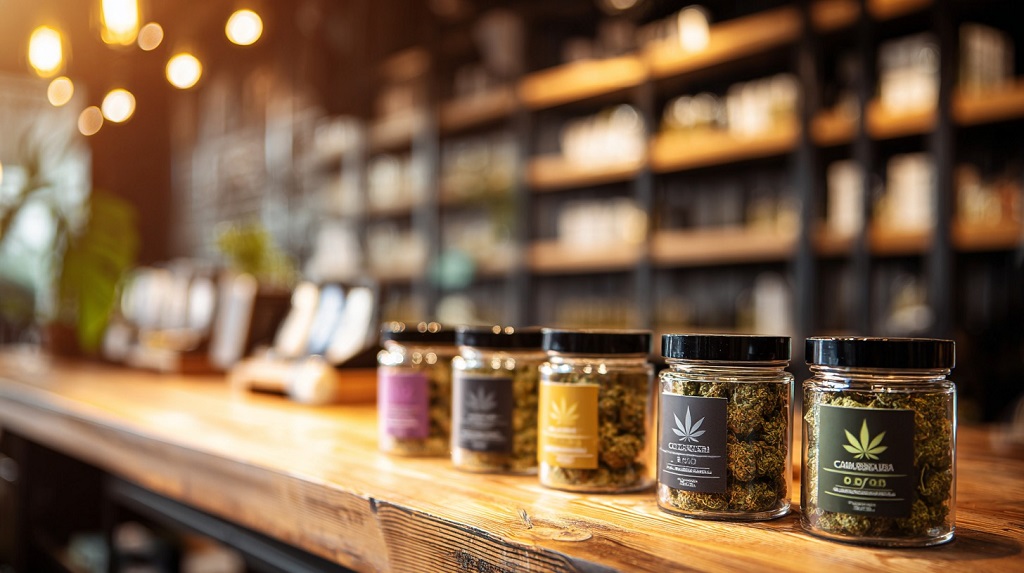
In just a few years, legal marijuana has gone from a fringe issue to a major part of national policy conversations.
Nearly half the states allow full adult use, and most of the rest have some form of medical program in place.
The U.S. now lives with a strange mix of access and restriction.
In one state, you can legally buy cannabis gummies at a licensed store. In another, having the same product could lead to an arrest.
Take a look at the legal status of marijuana in all 50 states.
| State | Legal for Adults | Legal for Medical Use | Note |
| Alabama | No | Yes | The medical program launched in 2024. Limited to registered patients and oil-based products. |
| Alaska | Yes | Yes | Recreational marijuana has been legal since 2015. Sold in licensed dispensaries across the state. |
| Arizona | Yes | Yes | Retail sales are thriving. Voters approved legalization in 2020, and now tax revenue funds education. |
| Arkansas | No | Yes | Medical use allowed. Though product range and access remain tightly restricted. |
| California | Yes | Yes | Fully open market with both recreational and medical cannabis. Strong local regulation. |
| Colorado | Yes | Yes | First state to legalize in 2012. |
| Connecticut | Yes | Yes | Legal retail sales started in 2023. Dispensaries must track seed-to-sale for safety. |
| Delaware | Yes | Yes | Legalization completed in 2023. The state is still building its retail infrastructure. |
| Florida | No | Yes | Medical use is strong. Adult-use bill expected soon, but not yet passed. |
| Georgia | No | Yes (low THC) | Only oils with less than 5 percent THC are allowed for certain medical conditions. |
| Hawaii | No | Yes | Medical cannabis is legal. Recreational proposals are under review in the legislature. |
| Idaho | No | No | One of the few states with no medical or recreational allowance for cannabis. |
| Illinois | Yes | Yes | Full legalization passed in 2019. Strong equity and tax reinvestment programs. |
| Indiana | No | Limited | Only allows CBD oil with zero THC. No medical cannabis framework yet. |
| Iowa | No | Limited | Allows low-THC cannabis for medical use through licensed dispensaries. |
| Kansas | No | No | Complete prohibition remains, though lawmakers continue to debate medical access. |
| Kentucky | No | Limited | Medical law was signed in 2023, still in development. No retail dispensaries yet. |
| Louisiana | No | Yes | Medical use is allowed with a doctor’s certification. Smokable flower legalized in 2022. |
| Maine | Yes | Yes | Among the earliest adopters. Legal home cultivation is legal. |
| Maryland | Yes | Yes | Recreational sales began in mid-2023. |
| Massachusetts | Yes | Yes | Fully developed retail network. One of the strongest cannabis markets in the East. |
| Michigan | Yes | Yes | Major hub for cannabis businesses. Recreational use is legal for adults 21 and older. |
| Minnesota | Yes | Yes | Adult-use legalization took effect in 2023. Retail sales launching in stages. |
| Mississippi | No | Yes | Medical law was passed in 2022 after court battles. The program is growing slowly. |
| Missouri | Yes | Yes | Legalized in 2022. Adult-use sales started less than a year later. |
| Montana | Yes | Yes | Legalized in 2020. Sales began in 2022 with strong local participation. |
| Nebraska | No | No | No legalization in place. Only hemp products are legal under strict limits. |
| Nevada | Yes | Yes | Retail cannabis is widely available. Strong tourist-driven industry in Las Vegas. |
| New Hampshire | No | Yes | Medical cannabis allowed. Recreational proposals continue to face resistance. |
| New Jersey | Yes | Yes | Legal retail shops have been open since 2022. |
| New Mexico | Yes | Yes | Legal recreational program launched in 2022. |
| New York | Yes | Yes | Adult-use law passed in 2021. |
| North Carolina | No | Limited | Only allows CBD oil for certain epilepsy cases. |
| North Dakota | No | Yes | Medical cannabis is available. Recreational proposal rejected in 2022. |
| Ohio | Yes | Yes | Voters approved adult-use in 2023. Sales began in 2025. |
| Oklahoma | No | Yes | Medical marijuana is legal. |
| Oregon | Yes | Yes | Long-standing legal system. One of the most mature cannabis markets in the world. |
| Pennsylvania | No | Yes | Active medical market. Adult-use bill still pending in legislature. |
| Rhode Island | Yes | Yes | Recreational sales began in 2022. |
| South Carolina | No | No | Still bans both recreational and medical cannabis. |
| South Dakota | No | Yes | Medical program in place. |
| Tennessee | No | Limited | Only allows very low THC oil for certain medical cases. |
| Texas | No | Limited | Medical use under Compassionate Use Program, capped at 1 percent THC. |
| Utah | No | Yes | The medical program is active. |
| Vermont | Yes | Yes | Fully legal for adults. |
| Virginia | Yes | Yes | Recreational possession is legal. |
| Washington | Yes | Yes | The second state to legalize after Colorado. |
| West Virginia | No | Yes | Medical marijuana is allowed. |
| Wisconsin | No | Limited | CBD only. |
| Wyoming | No | Limited | Allows low-THC oil under specific medical supervision. |
Frequently Asked Questions
The Bottom Line
CBD is now part of everyday life in the U.S. You’ll find it on shelves in grocery stores, at local pharmacies, and in medicine cabinets across the country.
What started as a last hope for families looking for relief has grown into something much bigger, a turning point in both public health and small business.
The 2018 Farm Bill made it possible by legalizing hemp at the federal level. But it was up to each state to decide how far to go with that opportunity.


